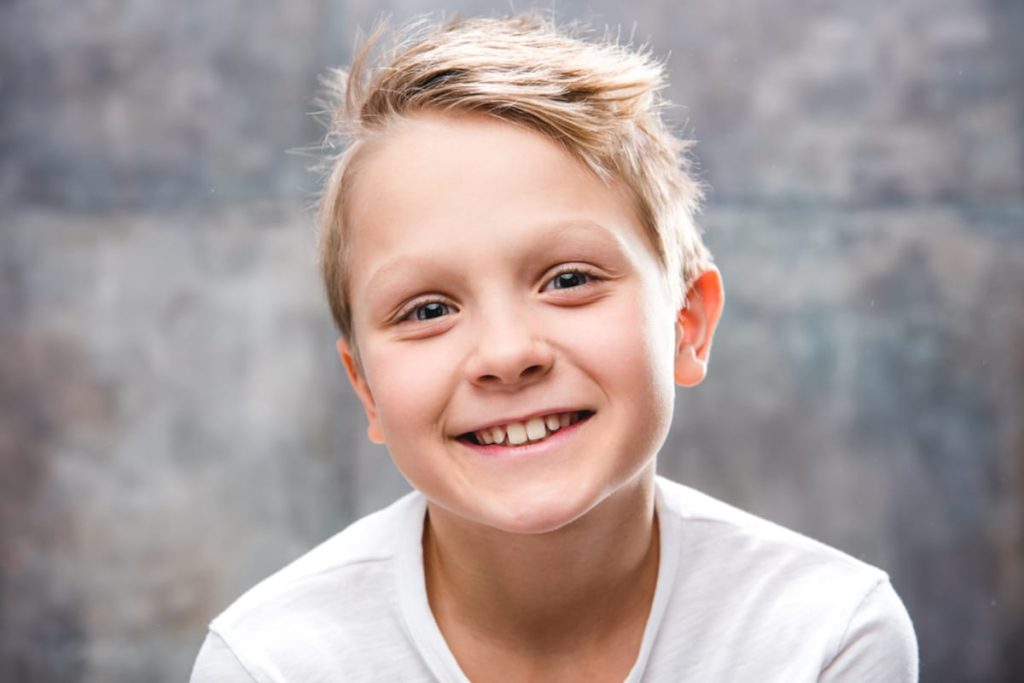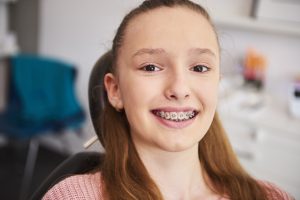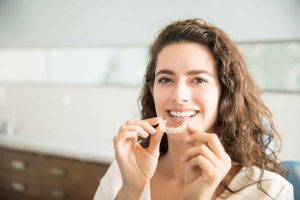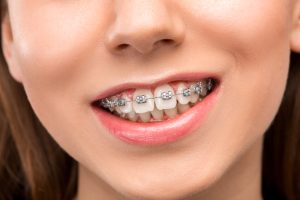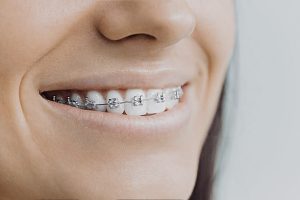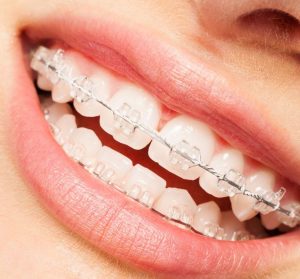Wearing an orthodontic headgear (or extraoral orthodontic appliance) allows our orthodontist to correct your child’s growing bite and support proper jaw alignment and growth. This appliance is usually recommended for children whose jawbones are still developing. A headgear can ensure symmetrical facial aesthetics by guiding their profile to grow in alignment. Headgear can also close tooth gaps between teeth, correct an uneven jaw bite from an overbite or underbite, and even correct teeth crowding.
Orthodontic headgear helps align smiles by using gear worn outside of the mouth that is attached to braces inside the mouth. Wearing braces with headgear creates needed tension on them with the help of its various parts:
Headgear Parts
- Head cap
- Fitting straps
- Facebow
- Elastic bands
- Tubes
- Hooks
- Chin cup
- Tubes
- Hooks
- Forehead pad
- Mouth yoke
Your child’s age is what makes the headgear so effective because while they are in their childhood or teen years, we can move their growing jaws so they properly align and sometimes even help move their teeth (especially their molars).
Your child may need to wear their headgear for one or two years. While they may not be as enthusiastic about wearing the headgear as we are, let them know that wearing it now can help them avoid jaw surgery when they get older. It can help keep sleep apnea and temporomandibular joint disorders (TMJ) away.
Three Headgear Types
When your child’s bite is misaligned, it is called malocclusion. There are three kinds of malocclusions correctable by wearing orthodontic headgear. There are also three main types of headgear your child could wear, depending on the problem being fixed.
- Cervical: This headgear fixes an overbite and anchors around the back of your child’s neck.
- High-pull: This headgear also anchors at the back of the head but corrects both an overbite and an open bite.
- Reverse-pull facemask: This headgear corrects your child’s underbite by moving the jaw forward, but it anchors onto both forehead and chin.
To ensure an effective outcome, your child needs to wear their headgear anywhere from 12 to 14 hours a day (or longer). Usually, we start your child off by wearing the headgear for an hour and then increasing each day until they work up to the recommended time that will ensure success. It typically means wearing the headgear after school and through the night. Encourage your child to stick to their assigned schedule so the headgear can make the changes more quickly.
If your child experiences pain or the headgear isn’t fitting right, you should contact our orthodontist because it may need adjusting.
Other basic headgear guidelines include the following:
- Take it off while eating (drinking through a straw is okay while wearing the headgear).
- Take the headgear off while they clean their teeth to make the task easier.
- If your child wears braces that are attached to the headgear, they need to stay away from chewing gum, hard candies, and hard-to-chew foods. Soft foods help after an adjustment.
- Avoid contact sports and rough activities while they wear their headgear.
- Take mild, over-the-counter pain medication for initial discomfort after an adjustment.
- Eating cold foods can soothe aching gums.
- Applying cold packs to the painful parts of your child’s face or jaw can also offer relief.
As you can see, your child needs to commit to wearing their headgear consistently for optimal results. When they are finished, their aligned smile and straight teeth will be worth it!

